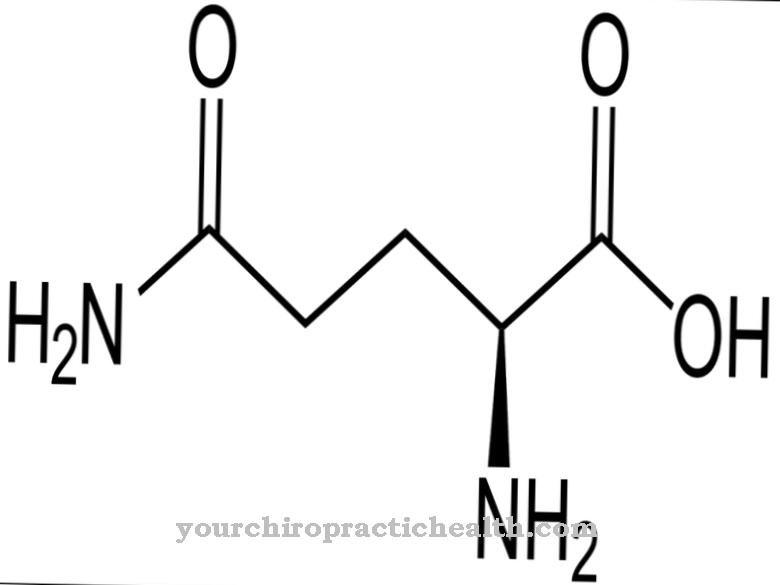As Nucleotide is a basic building block of ribonucleic acid (RNA) or deoxyribonucleic acid (DNA), which has a base, sugar or phosphate component. Nucleotides have vital functions in cells and are involved, for example, in hormonal signal transmission or in energy production.
What are nucleotides
Nucleotides are the basic building blocks of RNA and DNA. They are made up of a sugar molecule, a specific base and a phosphate group.
Nucleotides are used in the genetic code and many types, such as GTP, cAMP or ATP, also perform vital cell functions. The giant molecules RNA and DNA consist of a total of five different types of nucleotides.
Function, effect & tasks
Nucleotides are very important for the formation of new cells as well as the energy metabolism and also function as messenger substances. A body could not function without nucleotides.
With the help of nucleotides, the organism can restore its function after illness or injury. This requires a lot of building materials and a lot of energy, which, however, are not available in sufficient quantities in the event of a lack of nucleotides. In general, nucleotides perform the following tasks in the body:
- Energy carrier: For this you need the anhydride bonds, which are very high in energy
- Precursors of synthesis products such as RNA and DNA
- Parts of coenzymes: These are important for the process of various chemical reactions
- Allosteric modulation function: nucleotides have the task of regulating the activity of key enzymes
Education, occurrence, properties & optimal values
A nucleotide consists of the following components:
- a monosaccharide, which is made up of 5 carbon atoms and is also known as pentose
- a phosphoric acid residue as well
- from one of the five nucleobases (uracil, thymine, cytosine, guanine, adenine)
The sugar is linked to the base and phosphorus. If phosphate is bound to a nucleoside, the simplest nucleotide, the so-called mononucleotide, is formed. The phosphate forms an ester bond with the 5-carbon atom of the nucleoside by splitting off water. Therefore, nucleotides are very often called "phosphate esters of nucleosides".
If further phosphate residues are deposited, nucleoside di or nucleoside triphosphates are formed. Phosphoric anhydride bonds, which have a lot of energy, are formed between the phosphates. In the DNA only thymine, cytosine, guanine or adenine are used, whereas uracil is present in the RNA instead of thymine. There are also a number of other bases known as rare bases because they are only found in very small amounts in nucleic acids. These include, for example, hydroxylated or methylated purine and pyrimidine bases such as pseudouridine, dihydrouracil or 5-methylcytosine.
Three nucleotides that are linked together form the smallest unit necessary to encode the genetic information in the RNA or DNA. This unit of information is called a codon. There are basically two types of nucleotides: pyrimidine nucleotides and purine nucleotides. Purine nucleotides have a heterocyclic ring system made up of two rings, pyrimidine nucleotides only have one ring.
Nucleotides are a natural component of animal and vegetable food and can be found in all cells. The polymeric nucleic acids that are ingested with food are broken down by the organism into nucleotides or nucleosides, which are subsequently absorbed in the small intestine. However, nucleic acids occur in different amounts in food. Offal have a very high proportion, but many nucleic acids also contain meat and fish.
Diseases & Disorders
Healthy people are able to take in sufficient quantities of nucleotide compounds from food, to recycle them from cells or to synthesize them endogenously. But if the endogenous supply is not sufficient, it is extremely important to get nucleotides with the food.
Above all, tissues that have a high energy requirement need nucleotides in sufficient quantities. These include, for example, the intestines, the liver, the immune system, the muscles and the nervous system. Chronic diseases are particularly common in these tissues. Other tissue types such as the brain, lymphocytes, erythrocytes or leukocytes cannot synthesize nucleotides and are also dependent on the supply of certain foods. Dietary nucleotides are recommended in certain disease states or with reduced nucleotide uptake in order to optimize the function of tissues.
Nucleotides ingested with food stimulate the growth of bifidobacteria. Furthermore, lesions in the gastrointestinal tract can also be reduced and the length or growth of the intestinal villi can be increased. Especially with children who grow very quickly, with major injuries or infections, the question arises as to whether the self-synthesis is sufficient to be able to cover an increased nucleotide requirement. Breast milk contains a relatively high proportion of nucleotides, so infants who are fed breast milk should also have a corresponding intake.
If the nucleotide sequence of the genes changes, one speaks of a mutation. For example, a pair of nucleotides in DNA can be replaced by another. In this case one speaks of a point mutation or a "silent mutation". If one or more nucleotide pairs are lost or pairs are inserted, either a deletion or an insertion occurs within a gene.
In many cases, the protein that is formed then has a completely different structure and is unable to perform its tasks. Mutations can either be caused by mutagenic substances or radiation, or they can occur spontaneously. This can change individual bases and damage the DNA.



























